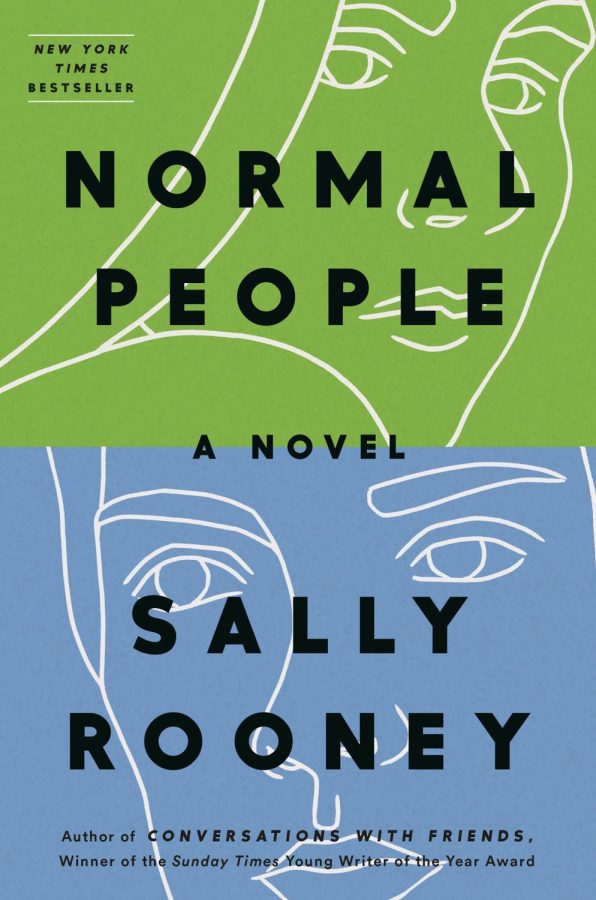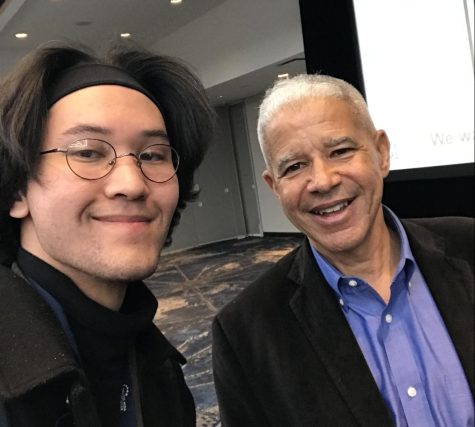“You should go, she says. I’ll always be here. You know that”
February 15, 2023
A comprehensive look at the page-turning novel, “Normal People”
Sally Rooney’s 2018 novel, Normal People, is a heart-wrenching story that explores the relationship between two “normal” people — Connell Waldron and Marianne Sheridan — who live in Sligo, Ireland. A complex narrative on first love and adult life, Rooney delivers a masterful coming-of-age story that touches upon topics of death, family issues, and mental health.
Marianne is an aloof, obnoxious person with a rocky childhood and surrounded by a hateful family. Her quick-witted and outspoken self causes others to pull away; isolating herself from peers and earning the title of the school’s outcast. Although Marianne is interested in the world and its issues, she struggles to find her place in it.
On the other hand, Connell is a people-pleaser, acting as a sponge with a thirst for society’s approval. Fearing the title of an outcast, he goes along with his friend group, even if they’re not aligned with his own personal morals. Like Marianne, he finds interest in literature and pressing world issues. Secretly, he admires her spunk but refuses to say so out loud – well, at least for a while.
The two end up at Trinity — a university in Dublin, Ireland — where their social positions are reversed. Throughout his life, Connell lived on government-funded checks in a single-parent household, relying on employment from Marianne’s family to clean their house.
For Marianne, however, higher education just seemed like the next thing in her life and it was never something she had to consider. Marianne finds herself at home at college, assuaged by socioeconomic and intellectual conformity. She eases her way into the conversation and suddenly finds herself wanted. Connell, on the flip side, is now left on the outside looking in.
Despite how he treated her in grade school, Marianne accepts him into her clique and her new life at Trinity. While the pair are caught up in a whirlwind of change as they transition into adulthood, one theme remains constant throughout the novel: their presence in each other’s lives, either as friends, lovers, or familiar strangers.
As readers catch glimpses into the characters’ childhoods and home lives, we begin to understand why the two characters are so reluctant to admit their love for one another. Unable to embrace genuine affection, the duo is instead hung up on the idea of strictly accepting the love that they think they deserve – half-assed and abusive.
In high school, the two shared a “friends-with-benefits” relationship. Wary of their disparate social statuses, Connell didn’t dare try to be seen with Marianne in the daylight. It went as far as Connell asking out another girl to a senior dance, causing Marianne to drop out and opt into home-schooling mere months before graduation.
Marianne was desperate to be liked, despite putting up a front that she was fine just the way she was. When the person who had taken up most of her evenings didn’t openly consider her, it broke her, reaffirming her belief of accepting only the love that she thinks she deserves.
“I feel guilty for all the stuff I said to you,’ Connell added. ‘About how bad it would be if anyone found out. Obviously, that was more in my head than anything… But I kind of suffer from anxiety with these things… I think I projected some anxiety onto you if that makes sense. I don’t know.”
But of course, Connell did consider asking her. He just wasn’t sure she wanted to go, or if she even liked him at all.
“You know, I’m not going to lie, he says, I obviously do feel a certain attraction towards you. I’m not trying to make excuses for myself. I just feel like things would be less confusing if there wasn’t this other element to the relationship.”
Throughout their numerous rendezvous, Connell and Marianne would become intimate with one another — both physically and emotionally — by breaking and climbing over the walls they’ve built to shield and protect themselves from others. “All these years they’ve been like two little plants sharing the same plot of soil, growing around one another, contorting to take room, taking certain unlikely positions,” writes Rooney. In retrospect, the most intimate scenes happen when the two aren’t physical.
During her study abroad in Sweden, Marianne is reminded that she is loved and missed by Connell through their email interactions, with Connell oblivious to the heroine’s abusive relationship with her current boyfriend. When Connell was in a depressive state, Marianne stayed on Skype with him, falling asleep and waking up together.
While neither of the two awkward lovers knows how to communicate with another due to the peculiar circumstances of their childhoods, they still engage in mutual interests and share a common small-town upbringing together.
The novel begs the central question: When you find that familiarity and comfort in one person, wouldn’t you want to spend all of your time with them? A normal person would answer with a yes, but how could you assume that another person even wants you there when you’ve been shunned away from love since childhood?
Or when they outcast you in front of everyone else and only want you in the hidden confines of their room – can you really believe you’re wanted at that point? Among all the confusion and deluded conclusions, readers ask: why can’t the two characters just simply confront one another? However, when you’ve been conditioned to just accept the issues life puts you through at a young age, how do you know when or how to ask those questions?
Typically when one reads, it is to escape the mundane and immerse oneself into some unrealistically happy ending. However, the characters in Rooney’s novel distance themselves from the trodden archetype of a well-adjusted teenager, instead living as hermits, communing with depression and self-loathing from the start. Which begs the question: why might I pick up a book about fictional characters who delve deeper into self-destruction, versus indulging in a self-help book?
The real answer is, I don’t know. I was captivated by the writing style, captivated by misunderstandings just like that of the characters – seeing beauty in the mundane and finding familiarity in tarnished relationship dynamics. The non-traditional approach to the concept of what a relationship truly means took me aback and reconstructed everything I initially believed over the years.
A few lessons I’ve learned – and intend to apply in my life – are the importance of honesty, the power that words hold, and what a genuine relationship between two people might mean.
It doesn’t always mean hanging out all the time or knowing every single intricate detail. It means showing utmost support and care, whether that’s offering someone with a bloody nose tea or listening to what they have to say when a room full of people won’t.
A complex study of teenage romance, the novel brings light to mental health, emotional damage, and childhood trauma. Normal People is an observation of two people who want to stay away from each other, but just can’t, trying to find a piece of themselves and one another in all the wrong places – complicating their own lives until they undoubtedly find their way back.

















